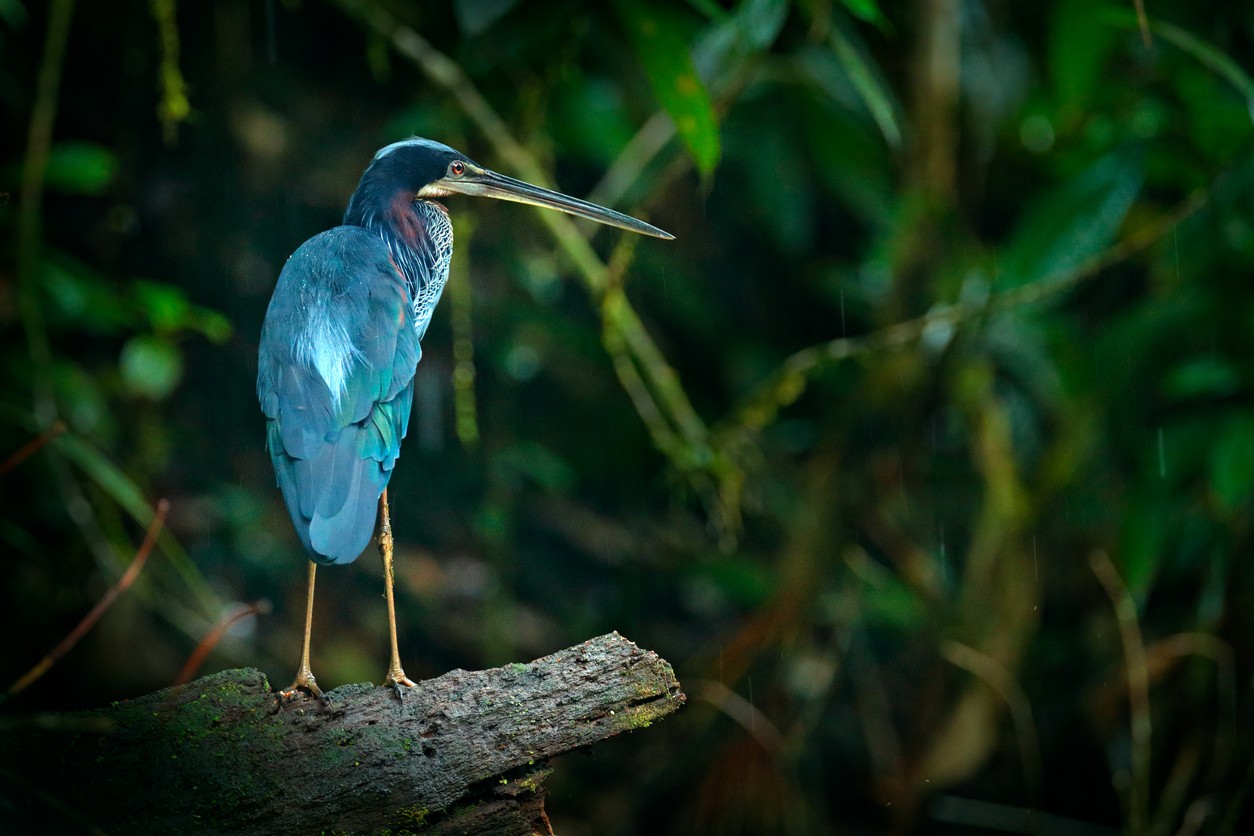Agami Heron
A species of Agami Heron Scientific name : Agamia agami Genus : Agami Heron
Agami Heron, A species of Agami Heron
Botanical name: Agamia agami
Genus: Agami Heron
Content
Description General Info

Description
This uncommon species is 66–76 cm (26–30 in) in length. It is short-legged for a heron, and has a thin bill which is considerably longer than the head. The neck and underparts are chestnut, with a white line down the centre of the foreneck, and the wings are shiny green. Wispy pale blue feathers decorate the crown, sides of the foreneck, and lower back. The legs, bill, and bare facial patch are dull yellow. During the breeding season the facial patch can change color to reddish. The sexes are similar, but juveniles are largely brown above with a white foreneck, and streaked brown-and-white underparts. The normal clutch size is two blue eggs. 
Size
76 cm
Life Expectancy
10-16 years
Nest Placement
Ground
Feeding Habits
Agami Heron chiefly consumes fish, utilizing stealth and slow movements to ambush prey in shallow waters. Agami Heron exhibits a preference for hunting at dawn or dusk with specialized feeding behaviors adapted to its aquatic environment.
Habitat
Agami Heron thrives in tropical and subtropical regions, predominantly residing in swamp forests, dense mangroves, and along forest streams. Preferring swampy lake edges and stream margins within tropical forests, agami Heron is also found in marshes, oxbow lakes, and coastal mangrove swamps. They primarily occupy lowland areas under 300 meters, but can inhabit altitudes up to 1000 meters in certain regions.
Dite type
Piscivorous
General Info
Feeding Habits
Bird food type
Behavior
Despite its stunning plumage, this reclusive species' preference for shade and overhanging vegetation means that it is rarely seen. This is a quiet bird, but pairs and family groups may make various snoring or rattling sounds. Rattling sounds and slow walking away are a typical response to disturbance. Agami herons stalk their prey (fish, frogs, small reptiles, and snails) in shallow shaded water in forested areas. They often standi still on perches or directly in the water, or moving very slowly. They rarely wade in open water. Several courtship behaviors have been described and are used by both sexes. Lores can change color to an intense red, and both sexes show a short-lived silver crest. 
Distribution Area
The agami heron is a Neotropical species occurring in Central and South America. The distribution area of the species extends from south-east Mexico through central and Caribbean Central America through the Amazon basin in South America, covering the following countries: Mexico, Guatemala, Belize, El Salvador, Honduras, Nicaragua, Costa Rica, Panama, Colombia, Ecuador, French Guiana, Suriname, Guyana, Venezuela, Peru, Bolivia and Brazil. This species is rare in open areas. The agami heron's habitat encompasses swamp forests, mangroves, forest streams and freshwater wetlands. They mostly occur from sea level to 300 m elevation. Records exist from 2600 m in the Andes. They nest in both single species and mixed species colonies on platforms of sticks in bushes and trees over water. Very few colonies are known to date but some are quite large, up to hundreds or even over a thousand nests. The following locations of colonies are known within the distribution area of the species:on a tiny island at the centre of a lagoon in the middle of the Pacuare Nature Reserve, Costa Rica, in the Tapiche Reserve, Peru, the Marais de Kaw-Roura National Reserve and Amazonian National Park, French Guiana, and other colonies outside of protected areas in Colombia, Mexico and Belize. 
Species Status
This species is very discreet and scientifically little known, which is a challenge for conservationists. Its remote habitat and secretive behavior may explain its apparent rarity. However, it is considered as Vulnerable by the IUCN Red List due to future habitat loss in the Amazon. Conservation efforts should concentrate on protection of important colony sites, developing a better understanding of the range, habitat needs and biology of the species. 


Scientific Classification
Phylum
Chordates Class
Birds Order
Pelicans and Relatives Family
Herons Genus
Agami Heron Species
Agami Heron